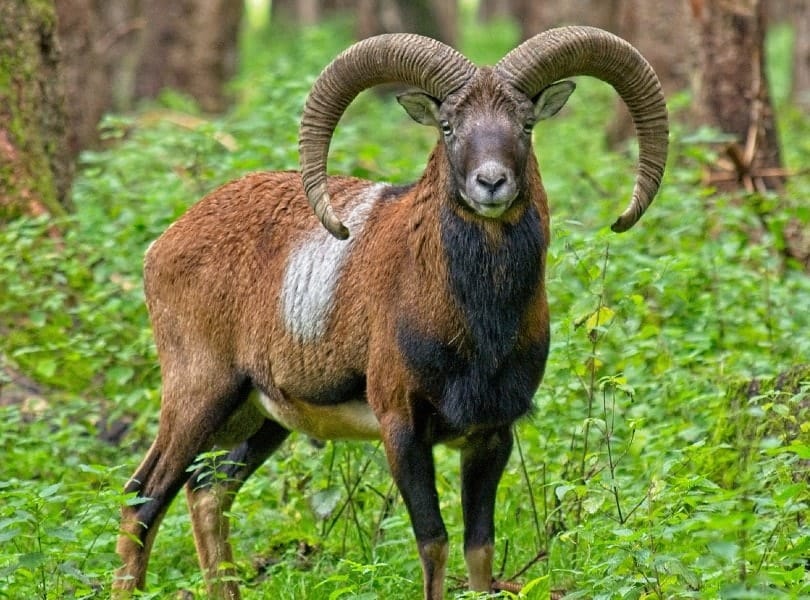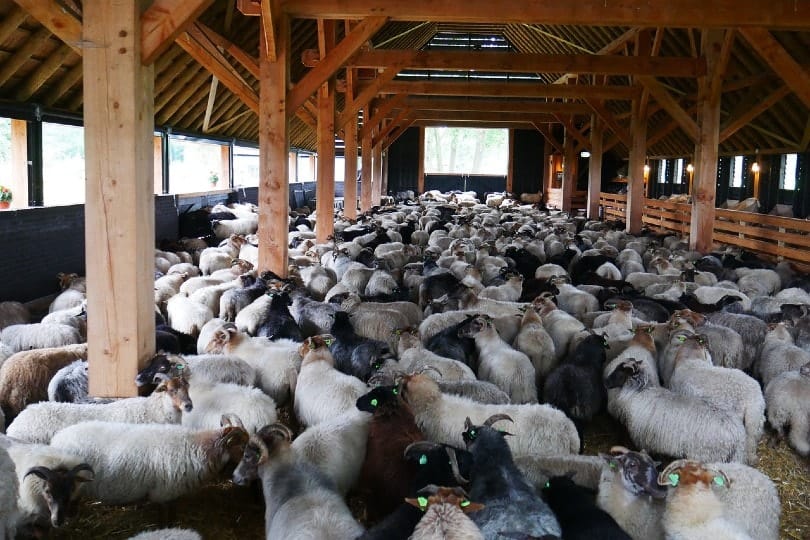Do wild sheep need to be sheared? No, sheep aren’t sheared in the wild. Wild sheep don’t need to be sheared, unlike domestic sheep that have been bred for their thick wool coats. So, how do wild sheep get rid of their coats naturally? Many wild sheep don’t have the kind of heavy fleece seen on domestic wool sheep, bred specifically to grow unusually thick wool.
Most wild sheep, and some domestic sheep, have hair coats, not thick wool coats. Wild sheep get rid of their wool naturally by shedding (also called molting). Sometimes they will help the process along by rubbing their bodies against trees.
Many animals grow thick fur in the winter and shed it naturally when the weather gets warmer, including wild sheep.

Wild Sheep Shedding
Did you know that the hair that’s shed naturally by wild sheep ends up being put to good use in the environment? Many birds will pick up the shed hair and use it to build their nests since hair shedding and nest building both occur in the springtime. Shedding is a natural process for wild sheep and many other animals…you’ve no doubt noticed some seasonal shedding in your four-legged companions!
Let’s look at the differences between wild and domestic sheep, and why some sheep need to be sheared and some don’t.
Wild Sheep

Wild sheep are found all over the world, especially in areas with mountainous terrain. There are several different species of wild sheep; most of them look very different than the sheep you see at farms.
The sheep was one of the first animals to be domesticated by humans, around 10,000 years ago. The wild ancestor of domestic sheep is called the mouflon. Other types of wild sheep include the familiar bighorn sheep of the Rocky Mountains.
As we mentioned, many wild sheep and some domestic sheep have hair coats that shed naturally with the change in seasons. These coats have two layers, a coarse overcoat, and a softer undercoat.
Wild sheep were domesticated by humans for their milk, meat, skin, and wool. Selective breeding over time has dramatically changed the coats of sheep used for wool.
Domestic Sheep

There are many different domestic sheep breeds. Some have been developed for their wool, and some for other uses like meat.
The sheep bred for wool have different coats than other kinds of sheep. Their thick fleece grows continuously, without the seasonal shedding seen in other sheep. Humans selectively bred them for the soft undercoat, not the coarse guard hairs, when they first developed wool sheep from wild sheep.
In some breeds of wool sheep, one year’s growth of fleece can weigh as much as 8 pounds. There are many types of wool sheep, including the merino sheep, known for its good quality wool. Wooly sheep like the merino don’t shed their wool like sheep with hair coats can do, they must be sheared.
Hair Sheep vs Wool Sheep
All wool sheep are domesticated animals. Hair sheep can be wild or domestic. In warmer climates, like Africa and South America, many of the domestic sheep are hair sheep.
While there are still many wooly sheep out there, hair sheep are growing in popularity. With new synthetic fibers, there is less demand for wool. Hair sheep are also easier to care for than sheep with heavy fleece.

Conclusion
What’s the difference between a wool sheep and a hair sheep? Domestic hair sheep will have some undercoat under their hair coat, especially in colder climates, but they shed naturally and do not need to be sheared. Wool sheep will become hot, dirty, and generally very uncomfortable if they are not sheared. It is difficult for them to survive in the wild.
Wild sheep, with their practical hair coats, are much better able to evade predators, stay clean, and adapt to seasonal changes in temperatures than wool sheep with their bulky fleece.
- Related read: Are There Wild Sheep in Nature? Where Can They Be Found?
Featured Image Credit: Fazwick, Shutterstock
